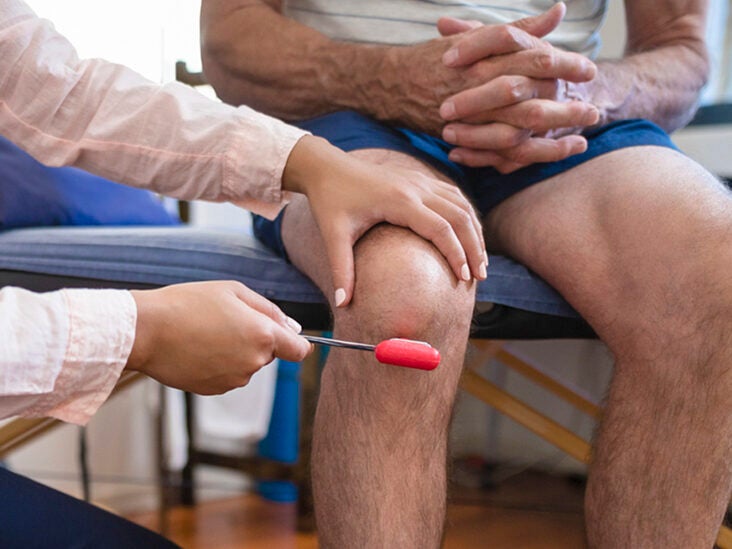Causes Of Hyperreflexia In Legs

Hyper-responsive reflexes or hyperreflexia is usually due to injury or compression of the spinal cord and is seen below the level of injury or compression.
Causes of hyperreflexia in legs. Check the full list of possible causes and conditions now. Vitamin deficiencies such as pellagra beriberi pernicious anemia. The aging process results in degenerative changes in the cervical spine that in advanced.
Common disorders that manifest detrusor hyperreflexia are stroke Parkinsons disease dementia spinal cord injury and multiple sclerosis. Objective neurological deficit upper motor neurone signs in the legs eg up-going plantars hyperreflexia clonus spasticity. Causes of Abnormal Goosebumps.
Although the prevalence of muscle weakness in the general population is uncertain it occurs in about 5 of US. It can also be the side effect of certain medications and can occur in conditions like electrolyte imbalance hyperthyroidism brain trauma and serotonin syndrome. The causes include diseases such as diabetes alcoholism amyloidosis uremia.
The condition of hyporeflexia is an indication of a problem with the reflex arc itself whereas hyperreflexia represents a problem with the spine located on top of the reflex. Chills commonly occur during feverish conditions. Hyporeflexia is usually the result of damage to the motor neurons in the central nervous system.
These usually indicate an interruption of corticospinal and other descending pathways that influence the reflex arc due to a suprasegmental lesion that is a lesion above the level of the spinal reflex pathways. An exaggerated reflex of the muscles. Possible causes include Spinal Cord Compression.
Other causes are serotinin syndrome from a carcinoid tumor in the gut or from overdosing of antidepressant medication thyroid storm and brain injuries or multiple sclerosis. Common causes of hyperreflexia include focal brain lesions typically causing unilateral hyperreflexia cervical myelopathy and motor neuron disease amyotrophic lateral sclerosis ALS. Lower motor neurone signs in the arms eg patientinfo In the control group five patients 38 showed hyperreflexia of the lower limbs and Babinski sign.














